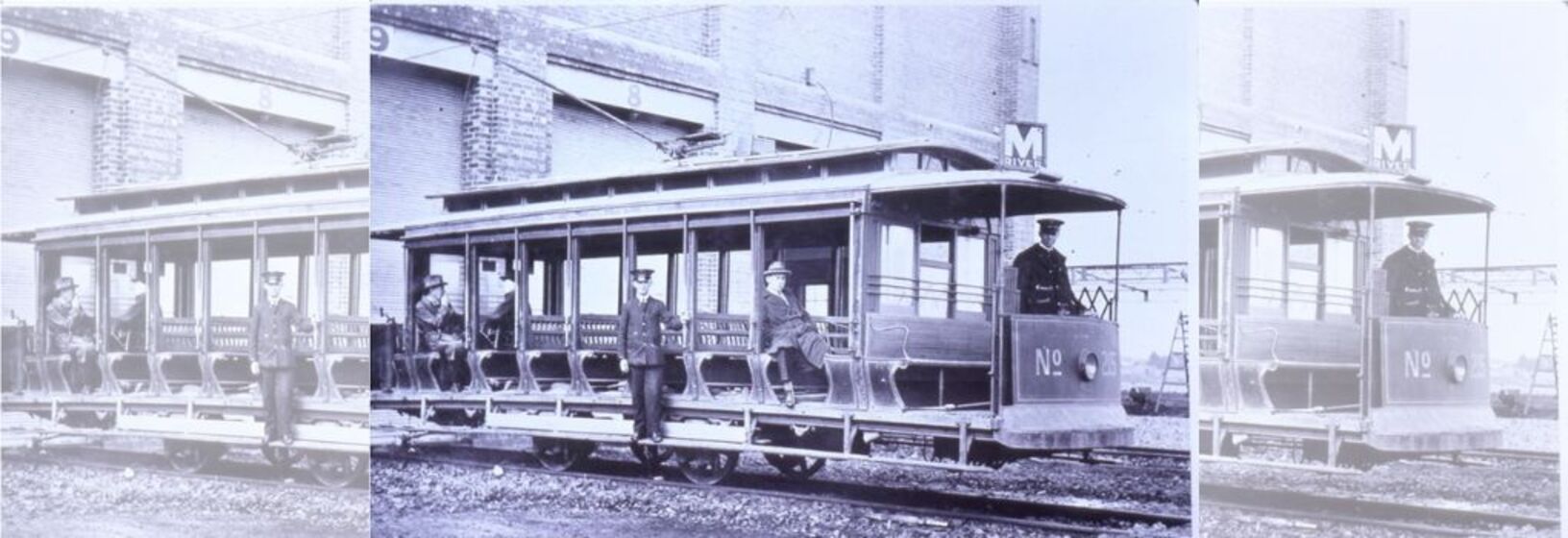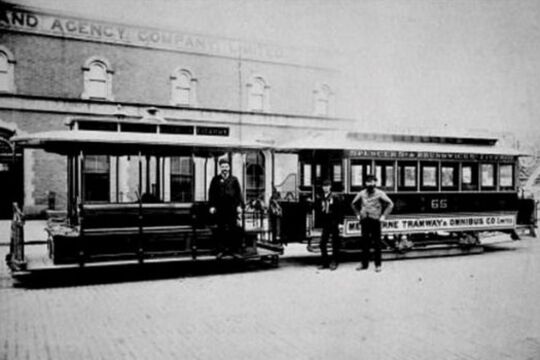Melbourne Trams: Step aboard!
'If you can't get there by tram, it's not worth going,' Daphne Rooms Trams have been an integral part of Melbourne since the late 19th century, so much so that the city and its tram system have developed in unison. This story explores the history of Melbourne’s trams from the perspectives of Trammies (tram workers) and passengers. The unique spirit amongst Trammies is reflected in the close-knit nature of the industry, and their pride in the work they do to keep Melbourne moving. For passengers, trams are a critical part of everyday life, moving locals and tourists around the city. Every Melburnian has certain tram routes they call their own and tales of memorable experiences riding the trams. So step aboard the intriguing world of Melbourne’s trams.
'Introduction to Melbourne Trams: Step aboard!'
Written by Carla Pascoe, May 2012
Trams are what make Melbourne distinctive as a city. For interstate and overseas visitors, one of the experiences considered compulsory is to ride a tram. When Melbourne is presented to the rest of the world, the tram is often the icon used. The flying tram was one of the most unforgettable moments of the Opening Ceremony of the 2006 Commonwealth Games. When Queen Elizabeth II visited Australia in 2011, she was trundled with regal dignity along St Kilda Road in her very own ‘royal tram’.
The history of trams is closely bound up with the history of this southerly metropolis. Melbourne’s tram system originated during the 1880s economic boom when the Melbourne Tramway and Omnibus Company opened the first cable line. Cable tram routes soon criss-crossed much of the growing city and cable engine houses can still be seen in some inner suburbs, such as the grand building on the south-east corner of Gertrude and Nicholson streets, Fitzroy. Some older passengers like Daphne Rooms still remember riding cable cars.
In the late 19th century, cable and electric tram technologies were vying for supremacy. Australia’s first electric tram line opened in 1889, running through what was then farmland from Box Hill station to Doncaster. The only surviving clue that a tram line once traversed this eastern suburb is the eponymous Tram Road, which follows the former tram route in Doncaster.
Gradually, various local councils joined together to create municipal Tramways Trusts, constructing electric lines that extended the reach of the cable system. In 1920 the tram system came under centralised control when the Melbourne and Metropolitan Tramways Board (MMTB) consolidated the routes and began electrifying all cable lines.
Manpower shortages during World War II meant that Australian women stepped into many roles previously reserved for men. The tramways were no exception, with women being recruited as tram conductors for the first time. After the war, tram systems were slowly shut down in cities around both Australia and the world, as transport policies favoured the motor vehicle. But thanks to the stubborn resistance of MMTB Chairman, Sir Robert Risson, as well as the wide, flat streets that characterise the city’s geography, Melbourne retained its trams.
Melbourne’s tram industry has always possessed a unique workplace culture, characterised by fierce camaraderie and pride in the role of the ‘trammie’ (the nickname for a tram worker). Many Trammies, like Bruce MacKenzie, recall that they joined the tramways because a government job was seen as a job for life. But the reason they often remain for decades in the job is because of the strong bonds within the trammie ‘family’. This is partly due to the many social events and sporting clubs that have been attended by Trammies, as Bruce MacKenzie remembers. It is also because the demands of shift work bond people together, explains Roberto D’Andrea.
The tram industry once employed mainly working-class, Anglo-Australian men. After World War II, many returned servicemen joined the ranks, bringing a military-style discipline with them. With waves of post-war migration the industry became more ethnically diverse, as Lou Di Gregorio recalls. Initially receiving Italian and Greek workers from the 1950s and 1960s, from the 1970s the tramways welcomed an even broader range of Trammies, from Vietnamese, South American, Turkish and other backgrounds.
Trammies perform a wide range of tasks critical to keeping the system running, including driving, track maintenance, tram maintenance, time tabling, customer service and more. But just as designs of ‘rolling stock’ have changed - from the beloved veteran W class trams to the modern trams with their low floors, climate control and greater capacity - so too have the jobs of Trammies changed over time. Bruce MacKenzie remembers joining the Preston Workshops in the 1950s when all of Melbourne’s fleet was constructed by hand in this giant tram factory. Roberto D’Andrea fondly recalls the way that flamboyant conductors of the 1980s and 1990s would perform to a tram-load of passengers and get them talking together. As a passenger, Daphne Rooms remembers gratefully the helping role that the connies would play by offering a steadying arm or a piece of travel advice.
Trams have moved Melburnians around their metropolis for decades. As Daphne maintains, ‘If you can’t get there by tram, it’s not worth going’. Everyone has memories of their experiences travelling on trams: some funny, some heart-warming and some frustrating. Tram driver, Lenny Bates, tells the poignant story of the blind boy who would sometimes board his tram on Collins Street and unhesitatingly call out the names of the streets they passed. As the films in this collection demonstrate, every passenger has their routes that they customarily ride and these routes take on a personal meaning to their regulars. You could say that every tram line has its own distinct personality. Whilst the way the tram system is run inevitably changes across time, one thing has been constant: trams have always played a central role in the theatre of everyday life in Melbourne.




